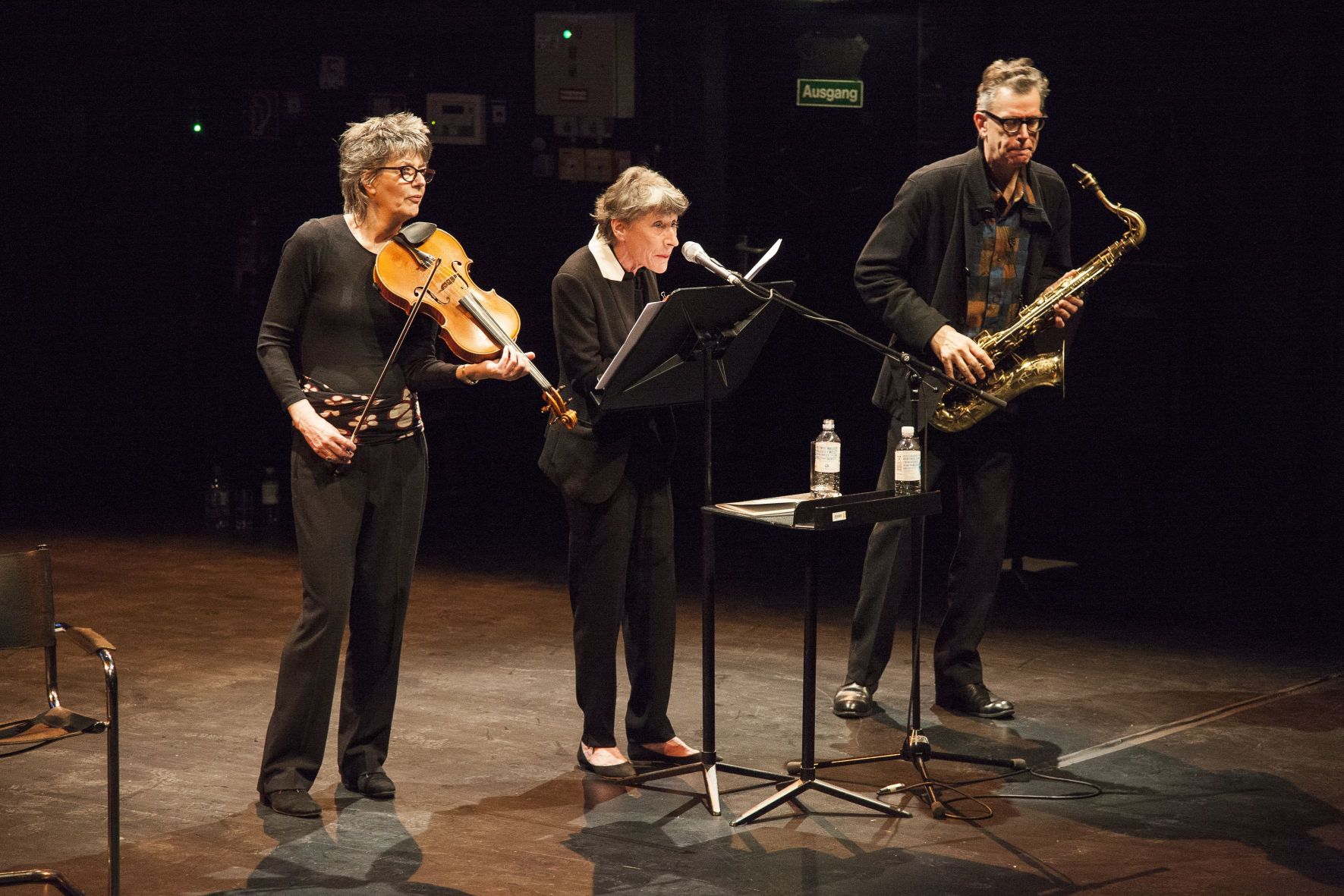The Netherlands, Literature, 2014
Anneke
Brassinga

The Dutch literary critic Rob Schouten declared his compatriot, the poet and translator Anneke Brassinga, a “language wizard” during her guest appearance at the 2013 Poetry International Festival Rotterdam. Since the middle of the 1980s, this poet, born in 1948, enchants her readers with a unique sense for the material of language, which often enough is in the very centre of her poems.
She owes becoming a poet – making her 1987 debut with the volume “Aurora”, followed so far by eight additional poetry publications as well as two works of prose and a volume of essays – more to a coincidence. In the middle of the 1970s, Brassinga was asked by De Revisor, still a new magazine then, to translate selected poems from Sylvia Plath’s Ariel into Dutch. At this point in time she was not particularly interested in poems – they struck her, Brassinga confessed, as “licenses to razzle-dazzle, smug face-making, and schmaltziness” (Brassinga in: Schreibheft 72/2009). Reading Plath’s poetry, however, becomes a reviving experience for her. Here, she comprehends, is not simply poetry at work, but rather as a “highly-energized substance” (Brassinga in: Schreibheft 72/2009). Her second, equally pivotal reading experience is Hermann Broch’s The Death of Virgil, which she translates in the middle of the 1980s – and gains from the concentration she musters up for this task an “excess of verbal energy that found its outlet in composing her own poems” (Brassinga in: Schreibheft 72/2009). In short, there would have never been Brassinga the poet without Brassinga the translator, in which capacity she translated Samuel Beckett, Ingeborg Bachmann, Vladimir Nabokov, and many others into Dutch: “Writing, and certainly writing a poem, is the same as translating, but simply the other way around: you cautiously grope for the beating heart of your own text.” (Brassinga in: Schreibheft 72/2009). The inventiveness of her language captivates. On the one hand, Brassinga loves the game of creating new words – at the same time, her poetry, as Rob Schouten puts it, seems like a “sanctuary for endangered words”. Nonetheless, her poems do more than move through a parallel world defined linguistically; they distinctly sink their roots into reality as well. Many of her poems deal primarily with nature – for Brassinga, the epitome of creation itself. She also pays homage to this by deeming the writing of poetry not least of all as a kind of creation that gets things into “Seyn” (= “Being”, thus the title of one of her poems), meaning: reproducing the act of creating with the very material of language itself. So it hardly surprises that her poetry – awarded the prestigious Constantijn Huygens Prize in 2008 – possesses not only an onomatopoeic quality, but also a mystical one. Brassinga’s work constitutes ecstasy turned into language. The poet communicates as a way to emerge from herself. There are primeval forces constantly at work in her poems: “Like Narcissus / one can be enamoured with the primeval language / as though a coiffured moped; / riding the neighing steed of eternity / in search of teats for that thunderous pull of milk / to slurp from where language flows / with fiery blazes, so the brain / becomes burdened with tiger juices, a quarter / millennium of years old” – as put in “Seyn” (from: Anneke Brassinga, “Kennwörter” (Passwords)). In the process, her language seems at times baroque, at others ludicrously burlesque: “Avoid the Sunday afternoon slime-pudding green, / light-emanating-forest-path-straighting; drive yourself away / from the small crown-domain-runners’-natural-forest-paradises, / before Satan’s scalding breaths cook the family patriarch to an egg”, from “Hausrat” (“Household Contents”). What Brassinga considers indispensable to the reading of every poem – switching oneself off as a reader, meaning: never being impressed or taken by the stirrings of personal sentiment – also applies to the reading of her collected work. It demands to be understood as a hieroglyphic entirety – complete with all its tonalities and mimetic effects, complete with all its associative clusters and rhythmic pattern. “All this together,” expressed in her essay, “The Beating Heart of the Text”, “transforms into a kind of spatial grid, into a permeable wall that surrounds something – a trapped beast, as Nijhoff puts it. This is the invisible substance of the poem. It consists of language no differently than we all consist of flesh and blood, while remaining different nevertheless; and inside this is life” (in: Schreibheft 72/2009). Her poetry does, in fact, pulsate like a living organ with powerful and appellative effects flowing through it – and yet stubbornly insists on poetic autonomy.
Text: Claudia Kramatschek
Translation: Karl Edward Johnson
|Immer wird etwas auf die Spitze getrieben. Fifteen Poems. Translated from Dutch by Maria Csollány and Ard Posthuma. Nederlands Letterenfonds. Amsterdam, 2013
Das klopfende Herz des Textes. Übersetzen und Dichten. In: Schreibheft 72. Zeitschrift für Literatur. Essen, 2009. pp. 161-163
Poems. In: Wespennest Nr. 165. Vienna, 2013, pp. 10-12. Translated from Dutch by Maria Csollány.
Jaap Grave, Jan Konst, Bettina Noak (eds.): Keine Triste Isolde. Contemporary Poetry from Flanders and the Netherlands. Bilingual edition. Translators: Marlene Müller-Haas, Ard Posthuma, Gregor Seferens, Ira Wilhelm. Wallstein Verlag, 2007. pp. 72-107
Past
-

Fata Morgana, dürste nach uns!
Anneke Brassinga2016, Book (Spurensicherung Bd. 28)

Order: info@matthes-seitz-berlin.de



